AirDoctor is a leading brand in air purification. We put their flagship models to the test in a side-by-side comparison.
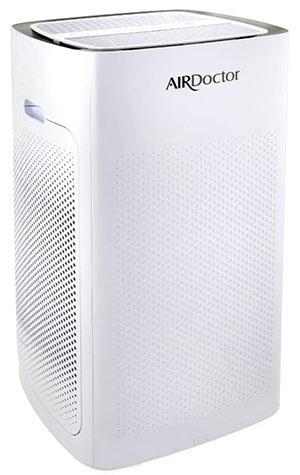
AirDoctor 5000
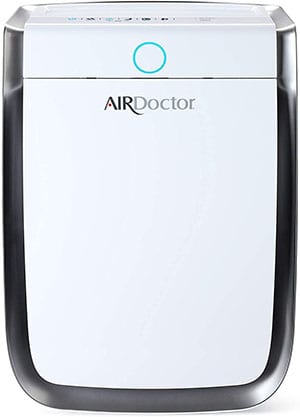
AirDoctor 3000
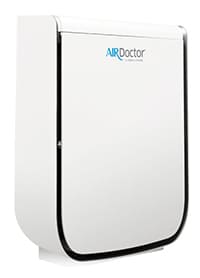
AirDoctor 2000
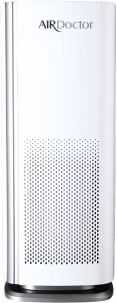
AirDoctor 1000
Purification Test
First, we need to compare purification performance of the different air purifiers. To do this, we test each air purifier individually by placing it in a medium sized room in our office (`14’x10’).
We take precise measurements of the pretest air quality using the Temtop LKC-1000S+ professional air quality detector.
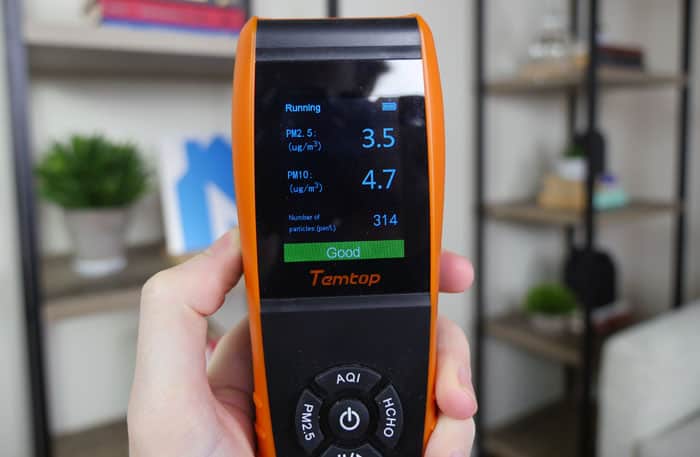
We then run the air purifier for 1 hour at the highest fan speed. After the 1 hour, we take an additional measurement of the air quality to compare with the pretest data.
Below, we’ve included information on the testing criteria and what defines good vs. bad air quality.
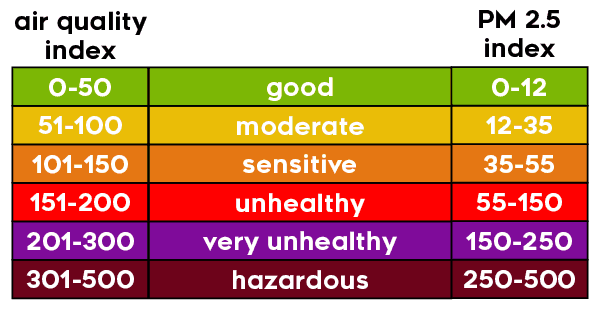
Lower numbers in the post-test data means better purification performance. We want to see the key data points get as close to 0 as possible.
AirDoctor 5000 vs. 3000 vs. 2000 vs. 1000
Below is a side-by-side of the air quality created by each purifier after it ran for 1 hour.
| 1 hr. PM2.5 | 1 hr. PM10 | 1 hr. Particles | 1 hr. AQI | |
|---|---|---|---|---|
| AirDoctor 5000 | 0.1 | 0.1 | 19 | 2 |
| AirDoctor 3000 | 0.1 | 0.2 | 15 | 1 |
| AirDoctor 2000 | 0.1 | 0.1 | 34 | 1 |
| AirDoctor 1000 | 0.1 | 0.2 | 15 | 1 |
AirDoctor 5000 Performance
Purification performance was excellent for the AirDoctor 5000.
Starting Baseline
- PM2.5: 1.9
- PM10: 3.2
- Particles: 396
- AQI: 7
After 1 Hour
- PM2.5: 0.1
- PM10: 0.1
- Particles: 19
- AQI: 2
It was able to improve PM2.5 by 94.7% and remove 95.2% of airborne particulates.
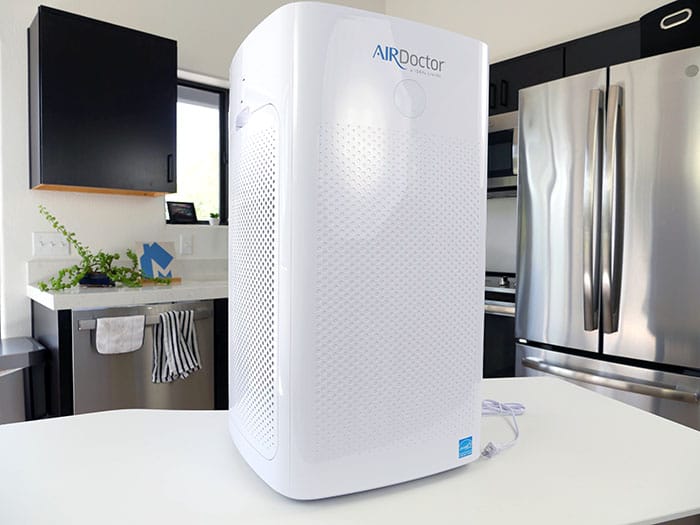
Seeing both the PM2.5 and PM10 at 0.1 is exactly what we are looking for in our testing.
AirDoctor 3000 Performance
Just like its larger version, the AirDoctor 3000 had fantastic results.
Starting Baseline
- PM2.5: 2.1
- PM10: 3.5
- Particles: 493
- AQI: 8
After 1 Hour
- PM2.5: 0.1
- PM10: 0.2
- Particles: 15
- AQI: 1
Our testing showed it was able to remove 97.0% of particulates in the surrounding air. In addition, it improved PM2.5 by 95.2%.
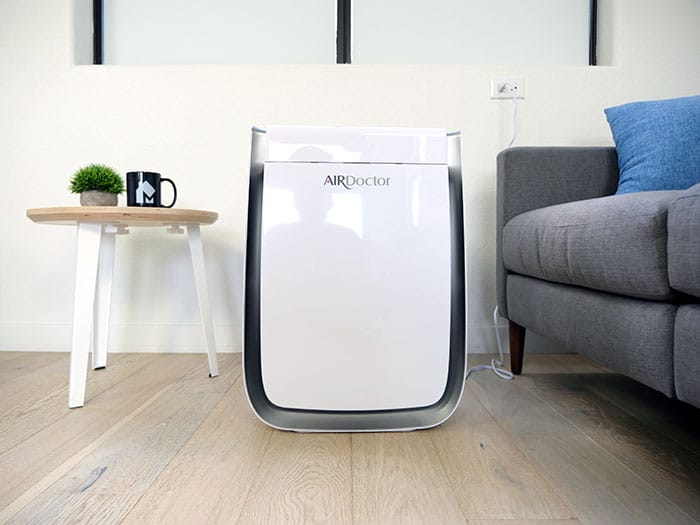
While PM10 didn’t get as low as 0.1, it wasn’t too far off. I would still consider this excellent performance.
AirDoctor 2000 Performance
As with the other models, performance for the AirDoctor 2000 was exceptional. Both PM2.5 and PM10 were at 0.1, which is nearly perfect.
Starting Baseline
- PM2.5: 0.9
- PM10: 1.6
- Particles: 189
- AQI: 3
After 1 Hour
- PM2.5: 0.1
- PM10: 0.1
- Particles: 34
- AQI: 1
The AD2000 improved PM2.5 by 88.9% and reduced airborne particulates by 82.0%.

AirDoctor 1000 Performance
Last but certainly not least, the AirDoctor 1000 also had fantastic results.
Starting Baseline
- PM2.5: 2
- PM10: 3.5
- Particles: 359
- AQI: 8
After 1 Hour
- PM2.5: 0.1
- PM10: 0.2
- Particles: 10
- AQI: 1
97.2% of airborne particulates were removed, and PM2.5 was improved by 95.0%.

Again, PM10 wasn’t quite 0.1, but this is still a great performance.
The Filters
The reason performance was quite similar between the different models is due to the filters inside. While coverage area and fan speed differ between the models, the filters are virtually the same across all 4 models.




They may be smaller or larger, depending on the model, but they are otherwise extremely similar.
These include:
- Pre-filter
- Activated carbon filter
- HEPA filter
- Negative ion generator
The pre-filter is first, catching the larger airborne particulates like hair or dust.

Next, the activated carbon filter focuses on VOCs and odors, removing them from the air.
After, the HEPA filter catches airborne particulates like dust or pollen as small as 0.3 microns.

The final filter, the negative ion generator, is optional and can be turned on/off at the touch of a button. It attaches negative ions to floating airborne particulates, causing them to fall to the ground.
Noise Test
We also tested how much noise is generated by each air purifier. We do this with a sound meter from about 3’ away and record the level of noise made.
| Low | Mid | High | |
|---|---|---|---|
| AirDoctor 5000 | 27.3 dB | 36.9 dB | 51.5 dB |
| AirDoctor 3000 | 28.5 dB | 46.0 dB | 53.2 dB |
| AirDoctor 2000 | 26.8 dB | 39.7 dB | 53.2 dB |
| AirDoctor 1000 | 29.2 dB | 41.4 dB | 51.4 dB |
Across the board the sound is quite similar between the purifiers. On the quietest setting they should be quiet enough for sleep. But they can be quite loud on the highest fan speeds.
Usability Test
Across the all devices usability for each air purifier is simple and straightforward. AirDoctor chooses to forgo some of the more cutting edge features for a solid design and fantastic performance.

They all are easy to set up, coming practically ready to run out of the box. Each uses touch buttons on the top of the device to control all the functionality.
These buttons include:
- Power control
- Fan speed control
- Auto mode
- Dim lights
- Preset timers
- Negative ion generator control
- Filter replacement indicators
None of the models have app connectivity or a remote control.

Maintenance is also quite similar. The sensors need to be wiped and the filters need to be replaced. HEPA filters need to be replaced every 6-12 months and carbon filters every 12 months, but this can change depending on usage and environment.
Size & Coverage Area
Size is the biggest difference between the different models. Due to the size and weight of the Air Doctor 5000 it stands on wheels, while the other models have handles to help move them around.
| Width | Length | Height | Weight | |
|---|---|---|---|---|
| AirDoctor 5000 | 16.0″ | 16.0″ | 28.8″ | 32.6 lbs. |
| AirDoctor 3000 | 16.0″ | 8.5″ | 24.0″ | 19.0 lbs. |
| AirDoctor 2000 | 13.9″ | 6.6″ | 18.7″ | 10.0 lbs. |
| AirDoctor 1000 | 9.0″ | 9.0″ | 23.0″ | 10.0 lbs. |
In addition, with different sizes comes different coverage areas.
Coverage Area (2x air changes per hour)
5000
2,001 sq. ft.
3000
1,274 sq. ft.
2000
610 sq. ft.
1000
570 sq. ft.
CADR
5000
534 CFM
3000
373 CFM
2000
162 CFM
1000
162 CFM
Specifications
| 5000 | 3000 | 2000 | 1000 | |
|---|---|---|---|---|
| Manufacturer | AirDoctor | AirDoctor | AirDoctor | AirDoctor |
| Width | 16.0″ | 16.0″ | 13.9″ | 9.0″ |
| Height | 28.8″ | 24.0″ | 18.7″ | 23.0″ |
| Weight | 32.6 lbs. | 19.0 lbs. | 10.0 lbs. | 10.0 lbs. |
| Filters | Carbon, HEPA, Negative Ion | Carbon, HEPA, Negative Ion | Carbon, HEPA, Negative Ion | Carbon, HEPA, Negative Ion |
| Wifi Compatibility | No | No | No | No |
| Room Coverage | 2,001 sq. ft. | 1,274 sq. ft. | 610 sq. ft. | 570 sq. ft. |
| CADR | 534 CFM | 373 CFM | 162 CFM | 162 CFM |
| Returns | Varies by retailer | Varies by retailer | Varies by retailer | Varies by retailer |
| Warranty | 1 year | 1 year | 1 year | 1 year |
| Price | Check Price | Check Price | Check Price | Check Price |
Should you buy the AirDoctor 5000?
I would recommend the AirDoctor 5000 if you’re looking for the following features:
- Extra large coverage area on wheels: If you are looking for air purification for a large room or full home, look no further than the AirDoctor 5000. It covers a massive 2,001 sq. ft. area with outstanding purification performance. Plus, it is easy to move around thanks to wheels.
Should you buy the AirDoctor 3000?
I would recommend the AirDoctor 3000 if you’re looking for the following features:
- Medium size, but large coverage: For a large area, but not quite as large as a full home or large apartment, the AirDoctor 3000 is an excellent option. It can still cover up to 1,274 sq. ft. but isn’t as large (or as expensive) as the 5000. In addition, purification performance is still fantastic.
Should you buy the AirDoctor 2000?
I would recommend the AirDoctor 2000 if you’re looking for the following features:
- Medium room coverage in a small device: If you are looking for coverage for a room rather than a large area, the AirDoctor 200 is a solid choice. It is 9 pounds lighter than the 3000 and can still cover 610 sq. ft. with fantastic results. That lighter size makes it easy to move around with you if needed.
Should you buy the AirDoctor 1000?
I would recommend the AirDoctor 1000 if you’re looking for the following features:
- Tower design with 360° degree intake: If you like the performance of AirDoctor but would rather a tower design, take a look at the 1000. It has slightly less coverage than the 2000, covering 570 sq. ft. but it still has great performance. In addition, it stands taller and thinner than 2000 or 3000 and has 360° degree air intake.

